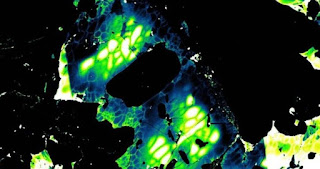In February 2013, a huge boulder from outer space exploded over the skies of Chelyabinsk, a city in West-Central Russia. The shockwave from the meteor injured nearly 1,500 people and the video went viral worldwide. Recent research suggests, based on analysis of the meteorites left behind, the space rock may have formed in the early Solar System.
The minerals in the meteorite damaged by the impact of this space rock provide clues about its formation. The findings are reported in the journal Communications Earth & Environment.
The youngest signs for this type of collision date from less than 50 million years ago. In that event, the mineral cracked but the impact did not have an extraordinary stress or temperature. It was a lesser impact, though it put it on a collision course that determined it to Earth.
More interesting to note is the existence of a collision which is much older than the research evidence. It is said that this happened less than 4.5 billion years ago. It was an important time in the history of our planet. Because that's when the Mars-sized planetoid Theia is believed to have hit Earth, throwing material into orbit, and forming the Moon.
"The age of meteorite impacts is often controversial: our work shows that we need to draw a lot of evidence to be more certain about the history of the impact, almost like investigating an ancient crime scene," said lead author Craig Walton, from Cambridge's Department of Earth Sciences.
Walton and his team carried out lead-uranium dating. Uranium radioactively decays into lead over time and by measuring its quantity, researchers can date features in meteorites, especially those that formed after these objects' collisions.
"Our question is whether this date is reliable, can we relate this impact to evidence of overheating of an impact? What we are showing is that the context of the mineralogical date is very important," he said.
Another rocky meteorite, in the same class as the Chelyabinsk meteorite, has indicated a high-energy collision between 4.48 and 4.44 billion years ago. This tells us something very important about formative motion in the corner history of our universe.
"The fact that all of these asteroids are recording intense melting at this time may indicate a reorganization of the Solar System, either resulting from the formation of the Earth-Moon or perhaps the orbital movement of the giant planets," he said.
A better understanding of the formation of these bodies as well as the formation of the Moon itself will provide important insights into how our planet formed.

